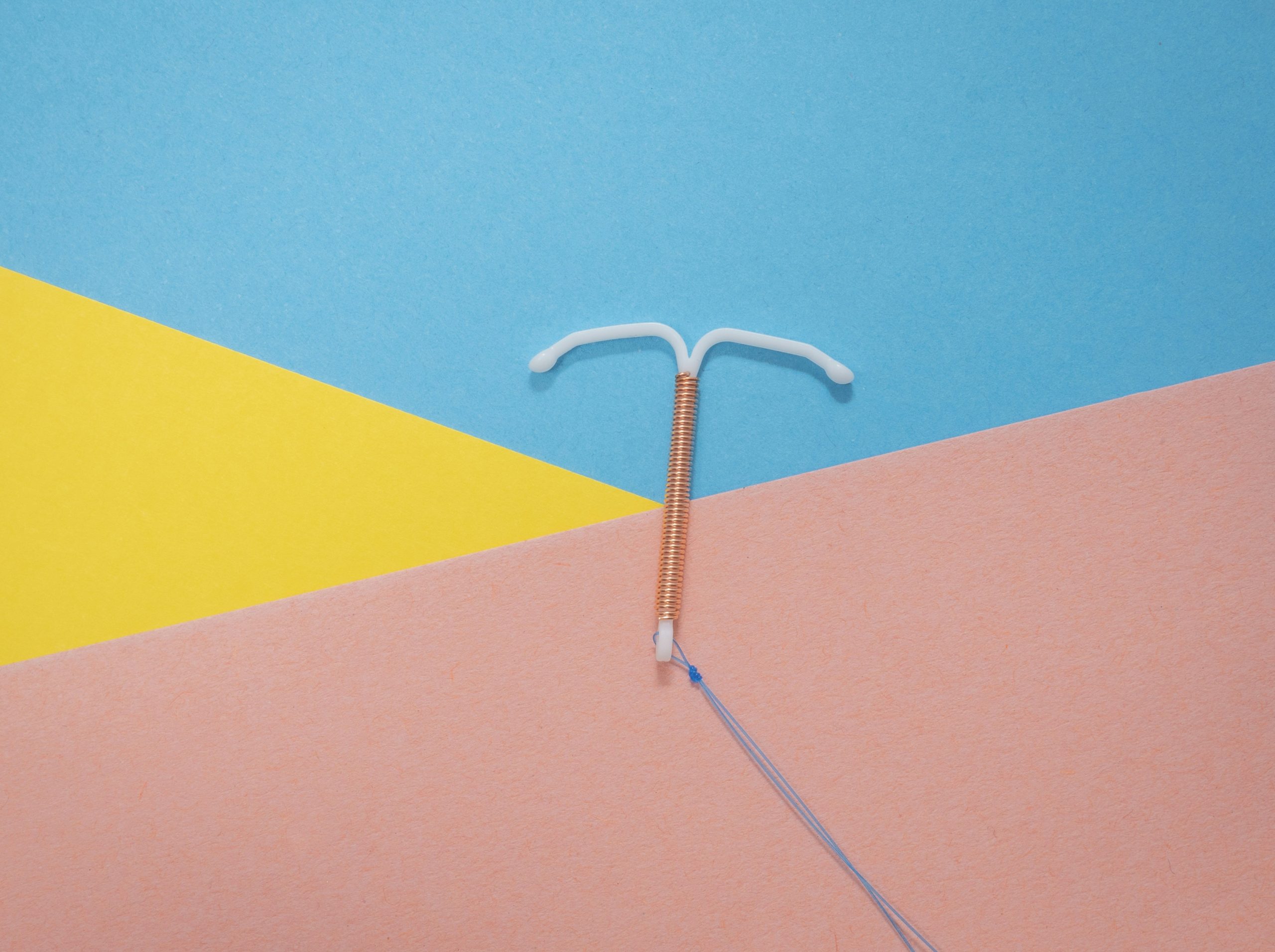Copper IUDs are a popular and effective form of long-term birth control. However, some probable health risks are associated with it that should not be neglected. While they are praised for their high efficacy and hormone-free nature, some users may experience significant side effects.
In this article, we will discover the probable risks associated with copper IUDs, including their impact on menstrual cycles, pelvic pain, and overall health.
How Copper IUDs Work
Copper IUDs, or intrauterine devices, function primarily through their interaction with the reproductive system to prevent pregnancy. It is a small, T-shaped device made of copper and plastic inserted into the uterus by a doctor.
According to the Cleveland Clinic, copper IUDs have a 99% effectiveness. It can be used for averting unwanted pregnancies for up to 10 years. Copper IUDs work immediately. Therefore, it is also used for emergency contraception by healthcare providers.
The copper wire around the device produces copper ions and releases them into the uterine hole. These ions create an environment toxic to sperm, decreasing their mobility and ability to fertilize an egg.
Additionally, the presence of the IUD induces an inflammatory response in the uterine lining, further inhibiting sperm movement and implantation of a fertilized egg. This dual mechanism effectively prevents pregnancy.
According to the Mayo Clinic, only 1% of women might get pregnant even after using a copper IUD. The risk of pregnancy remains consistently low for ParaGard users over time. However, if pregnancy does occur with ParaGard, there’s a significant chance it could be ectopic. This means the fertilized egg implants outside the uterus, typically in a fallopian tube.
Can a copper IUD affect fertility once it is removed?
Once a copper IUD is detached, fertility usually becomes normal almost instantly. Most women can become pregnant within a few weeks after detaching. The device does not have long-term effects on the uterus or overall reproductive health.
Common Side Effects
Copper IUDs can cause several side effects, particularly during the initial months after insertion. Common issues include increased menstrual bleeding and cramping, which some users find significantly more severe than before. Spotting between periods is also frequent, and some women may face heavier or prolonged periods.
According to WebMD, more severe side effects of copper IUDs include dizziness, cramps, fainting, and ovarian cysts. Around 10% of women develop these fluid-filled sac-like structures in their ovaries after 1 year of installation. These are generally harmless and disappear within 3 months.
In addition, there is a risk of pelvic pain, especially if the IUD is not positioned correctly. Though these side effects often diminish over time, they can be bothersome for many users. If symptoms persist or deteriorate, it’s important to connect with a gynecologist to ensure the IUD is not causing any complications.
Potential Health Risks
While copper IUDs like Paragard are generally safe, they carry potential health risks, including severe pelvic pain, heavy bleeding, and risk of infection. Some users of Paragard have reported complications such as device breakage or migration, which led to lawsuits. The lawsuit alleges that the manufacturer failed to warn the users sufficiently.
Individuals who experienced serious side effects or injuries related to Paragard, such as perforation or abnormal bleeding, may be eligible for a lawsuit. If you believe you have been affected, consulting a Paragard lawyer can help you understand your legal options and seek reimbursement for your sufferings.
TorHoerman Law reports that the Paragard IUD lawsuit is still in progress, with over 2,774 cases currently pending. The plaintiffs in these cases are pursuing compensation for injuries caused by the device, covering medical costs, pain, and emotional distress.
Can copper IUDs cause issues during pregnancy or affect a future pregnancy?
Copper IUDs are designed to prevent pregnancy. If a woman conceives even after the IUD is in place, it can lead to complications such as ectopic pregnancy or miscarriage. Once the IUD is removed, it typically does not affect future pregnancies, and most women can conceive normally without long-term impacts on their fertility.
Long-Term Health Concerns
Long-term use of copper IUDs may be associated with a few health concerns, though they are generally rare. Over extended periods, some women might experience persistent heavy bleeding, severe cramping, or an increased risk of pelvic infections. There are also worries about probable effects on the uterine lining, which could affect overall reproductive health.
However, most users do not experience serious long-term issues, and the IUD can be safely used for many years. Regular health monitoring is essential to analyze ongoing symptoms and ensure the IUD remains properly positioned and effective.
Managing and Mitigating Risks
Managing and mitigating risks associated with copper IUDs involves a proactive approach and regular medical supervision. It’s crucial to have the device inserted and checked by a qualified healthcare provider to ensure proper placement and minimize complications.
According to the National Library of Medicine, IUDs can be installed within 10 minutes after delivery of the placenta. It can also be placed after an abortion, only if it wasn’t a septic abortion or after 4 to 6 weeks postpartum. Severe side effects can be an indication of its removal.
Monitoring for side effects like heavy bleeding or severe cramping can help address issues early. If symptoms arise, consulting with a healthcare provider promptly can lead to effective management or alternative solutions. Additionally, maintaining open communication with your provider about any concerns or changes in your health can help mitigate potential risks. It also ensures the ongoing safety and effectiveness of the IUD.
What follow-up care is necessary after the insertion of a copper IUD?
After the insertion of a copper IUD, a follow-up visit is typically recommended within 4 to 6 weeks. It ensures the device is properly positioned and helps address any initial side effects. Regular check-ups, usually annually or as advised by your healthcare provider, are important to monitor the IUD’s placement and overall reproductive health.
Alternatives to Copper IUDs
For those seeking alternatives to copper IUDs, several options are available, each with its benefits and considerations. Hormonal IUDs, such as Mirena, release hormones to reduce menstrual bleeding and alleviate cramping. Birth control pills, patches, or rings offer flexibility and can be adjusted based on individual needs.
Other long-term options include implants, which release hormones to prevent pregnancy for several years. Barrier methods like condoms or diaphragms provide temporary protection and do not require a prescription. Consulting with a healthcare provider can help determine the most suitable alternative based on personal health, lifestyle, and contraceptive goals.
Making an Informed Decision
Making an informed decision about contraceptive options involves thorough research and a thoughtful evaluation of personal health needs and lifestyle. It’s essential to consider the effectiveness, side effects, and long-term implications of each method, including copper IUDs and their alternatives.
Consulting with a healthcare provider can provide valuable insights tailored to individual health profiles, helping to address any concerns or preferences. Open discussions about past medical history, potential side effects, and personal goals will guide you in choosing the most appropriate contraceptive method. Ensuring you have all relevant information allows for a well-informed choice that aligns with your overall health and well-being.
Empowering Your Choice
Understanding the potential hazards, side effects, and alternatives of copper IUDs is crucial for making an informed contraceptive decision. By staying informed about the benefits and risks and consulting with healthcare professionals, you can select the option that best aligns with your health.
Empowering yourself with knowledge ensures that you make choices that support your long-term well-being and reproductive health.
Stay Tunned With Creative Releated To Get Dailt Informations About Your Likely Topics



